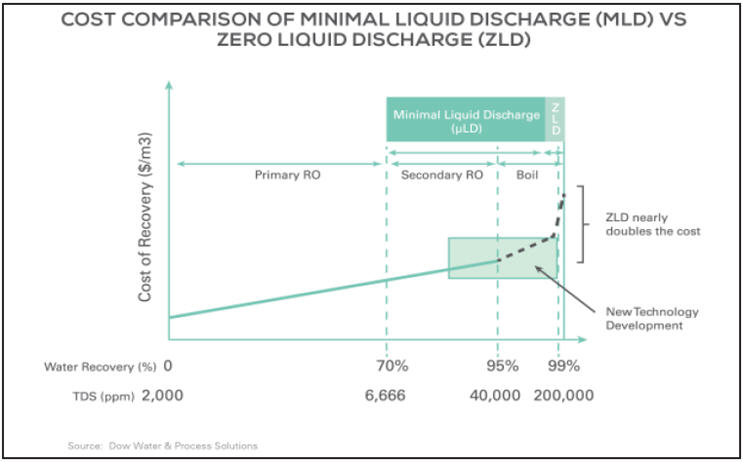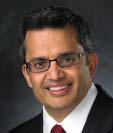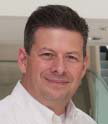Minimal Liquid Discharge: Adopting A 'Less Is More' Mindset
By Snehal Desai, Steve Rosenberg, and Nanette Hermsen
If zero liquid discharge (ZLD) is too costly, water reuse and sustainability can still be prioritized and realized through minimal liquid discharge (MLD).
As we move toward a circular economy based on virtually no waste, with raw materials continually recycled and reused, the crucial role water plays is top of mind for corporate leaders across the globe.
Conversations around water supply challenges have penetrated the boardroom level in 62 percent of large companies, according to the Carbon Disclosure Project (CDP), unlike in years past when sustainable practices were relegated to mid-level management. Moreover, almost a quarter of the 830 companies surveyed by the CDP said that water-related issues could limit the growth of their businesses.1
Manufacturing is one of the sectors most vulnerable to water shortages. With global water demand for manufacturing anticipated to increase by 400 percent from 2000 to 2050,2 maximizing the efficient use of water by industry is a critical step in the right direction — for both the environment and the bottom line.
Adopting A Minimal Liquid Discharge Mindset
Business value is at risk if companies don’t take capital considerations surrounding water use into account and adjust their operations accordingly. Companies must strike a balance between meeting their objectives and what is practical or reasonable in terms of costs.

While zero liquid discharge (ZLD) — a water treatment process in which all wastewater produced is purified and recycled, leaving zero liquid discharge at the end of the treatment cycle — is a viable solution for some companies, it’s not the most realistic solution for all, given the steep price tag.
When facing significant discharge mitigation costs, businesses often wonder, “What are my other options besides ZLD?” One solution is minimal liquid discharge (MLD), an approach adopted by brand names like General Motors and Frito-Lay. MLD is a more cost-effective and sustainable way for companies to improve their water footprint, enabling up to 95 percent liquid discharge recovery at a fraction of ZLD’s costs.
Coined by Dow, the term MLD might be new, but the processes on which it is based rely on proven water filtration technologies such as ultrafiltration, reverse osmosis (RO), and nanofiltration — with a host of improvements.
Depending on individual regulatory and environmental needs and requirements, as well as the capital and operating budget, MLD can be a good fit for many industrial and municipal sites. By conducting a water audit to match waste streams and appropriate water requirements, companies can better identify how much wastewater requires processing and the approach that will most economically and sustainably match their plant’s needs.
An excellent example of an “MLD mindset” in action can be found at the General Motors (GM) vehicle assembly plant in San Luis Potosi, Mexico, outside of Mexico City, which opened in 2008.3 The plant, which employs up to 1,800 and has an annual capacity of 160,000 cars, is located in an arid, remote area with no receiving stream or municipal sewer available to discharge wastewater.
Yet by using a combination of RO technology, a proprietary high-rate chemical softening process, and other technologies, the plant can convert up to 90 percent of its tertiary wastewater into reusable water, leaving less than 10 percent of liquid waste for discharge into adjacent solar ponds for evaporation.
Clearly, GM has determined 90 percent to be the optimal economic number for its wastewater conversion. That’s what MLD is all about — providing users with a variety of options to achieve the results most optimal for a particular plant, based on a variety of factors.
And it’s important to point out that an MLD approach still significantly benefits the environment and surrounding community.
In arid Casa Grande, AZ, for example, Frito-Lay North America, a division of PepsiCo, is using a membrane bioreactor (MBR) and activated carbon/low-pressure RO system to achieve 70 to 75 percent water recovery, saving more than 100 million gallons of fresh water annually. The plant is the first in the U.S. to convert food process water into drinking water quality for direct reuse in production.4
It’s A Journey, Not A Destination
The big challenge lies in adopting this new mindset of “We can achieve significant gains without breaking the bank.” More companies must realize they don’t have to wait for the perfect ZLD solution when an MLD strategy will put them on a path toward higher recovery today. Traditional water treatment technologies have advanced, and now companies can achieve a better water footprint without going to the extreme — all while staying within their budget. By adopting this mindset and evaluating current systems for areas of improvement, companies can take significant steps towards a circular economy without breaking the bank. We are on a journey to zero, but the major steps along that path are what can ultimately help us make significant progress along the way.
References:
1. http://wallstcheatsheet.com/business/why-water-scarcity-is-such-a-bigproblem-for-big-business.html/?a=viewall#ixzz3SnU1HFxj
2. http://www.unwater.org/worldwaterday/learn/en/
3. www.waterworld.com/articles/2011/01/zero-liquid-discharge-acceleratesacross.html
4. www.greentechmedia.com/articles/read/near-net-zero-at-frito-lays-casagrande-facility-in-arizona
About The Authors
 As the global business director for Dow Water & Process Solutions, Snehal Desai is responsible for implementing business growth strategy and leading the 1,700 people who work in the business. He is an expert on key industry and global issues such as water scarcity, quality, and safety, along with the interdependencies of water and energy.
As the global business director for Dow Water & Process Solutions, Snehal Desai is responsible for implementing business growth strategy and leading the 1,700 people who work in the business. He is an expert on key industry and global issues such as water scarcity, quality, and safety, along with the interdependencies of water and energy.
 Steve Rosenberg is a research fellow for Dow Water & Process Solutions with more than 30 years of industrial experience in the development of advanced materials. His main focus is on developing breakthrough innovations for water treatment technologies such as ultrafiltration, reverse osmosis, and ion exchange.
Steve Rosenberg is a research fellow for Dow Water & Process Solutions with more than 30 years of industrial experience in the development of advanced materials. His main focus is on developing breakthrough innovations for water treatment technologies such as ultrafiltration, reverse osmosis, and ion exchange.
 Nanette Hermsen is the global marketing director for reverse osmosis at Dow Water & Process Solutions. In this role, she is responsible for setting the marketing strategy for the business unit, driving regional marketing programs, and working closely with research to identify market aligned innovation targets for reverse osmosis.
Nanette Hermsen is the global marketing director for reverse osmosis at Dow Water & Process Solutions. In this role, she is responsible for setting the marketing strategy for the business unit, driving regional marketing programs, and working closely with research to identify market aligned innovation targets for reverse osmosis.
